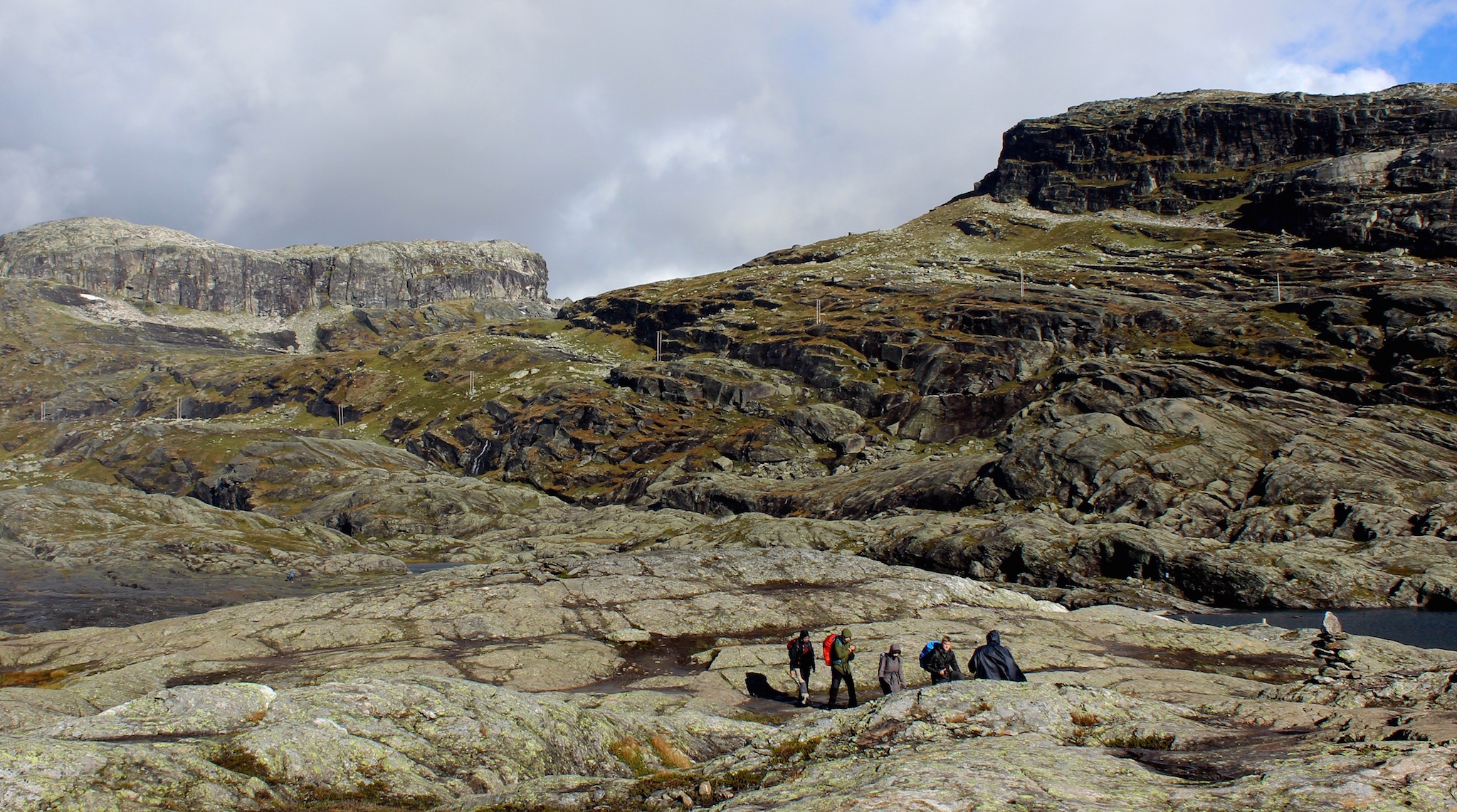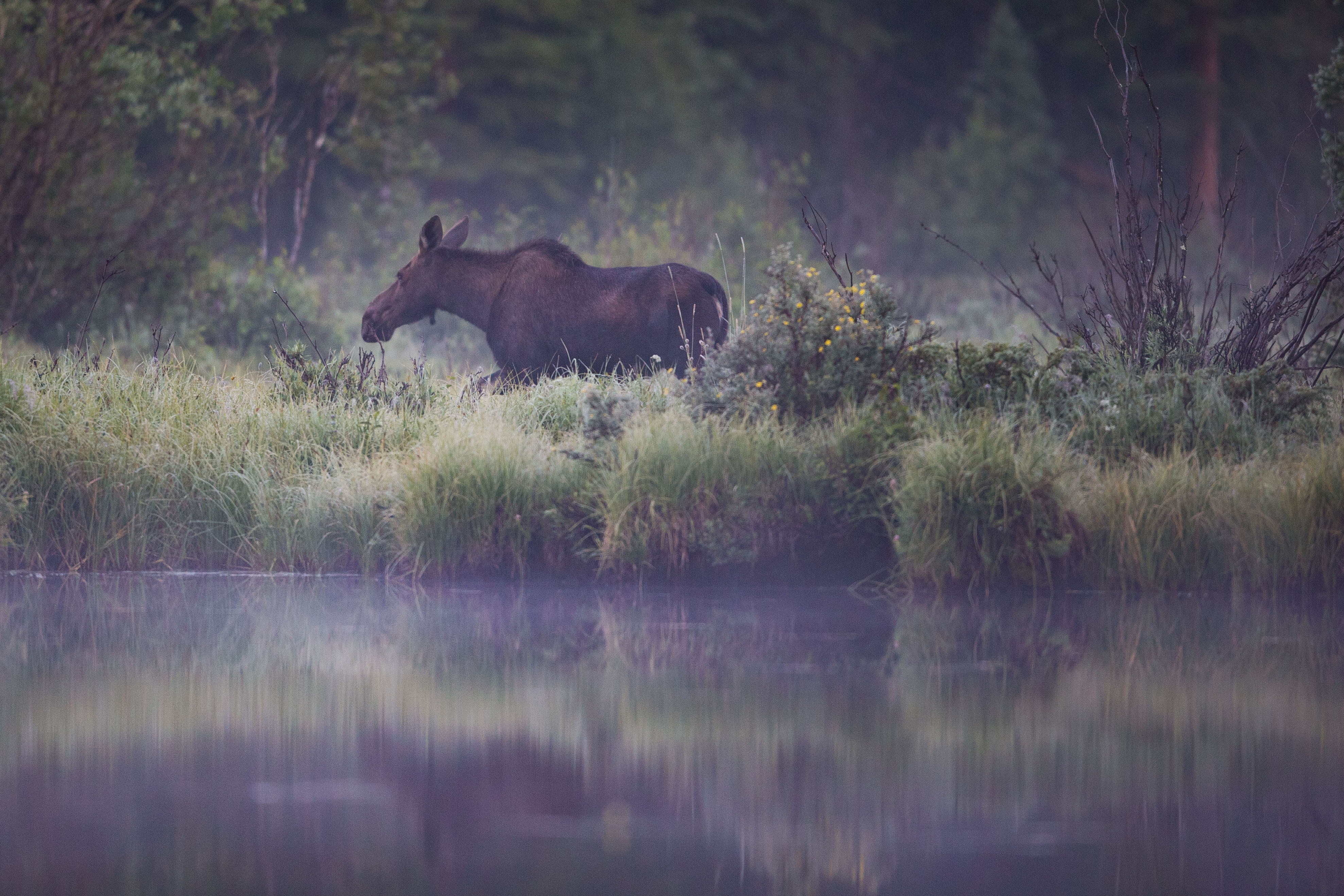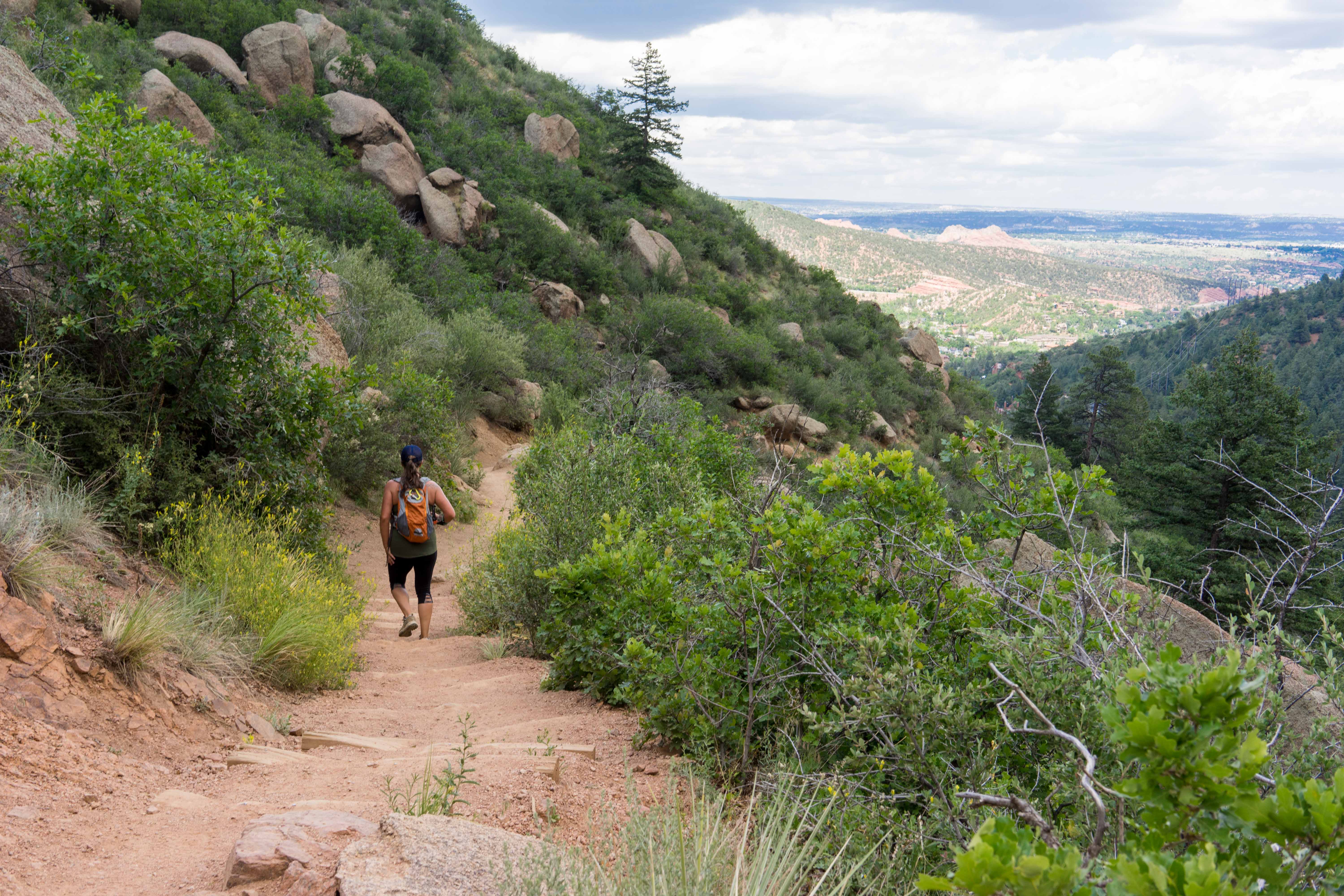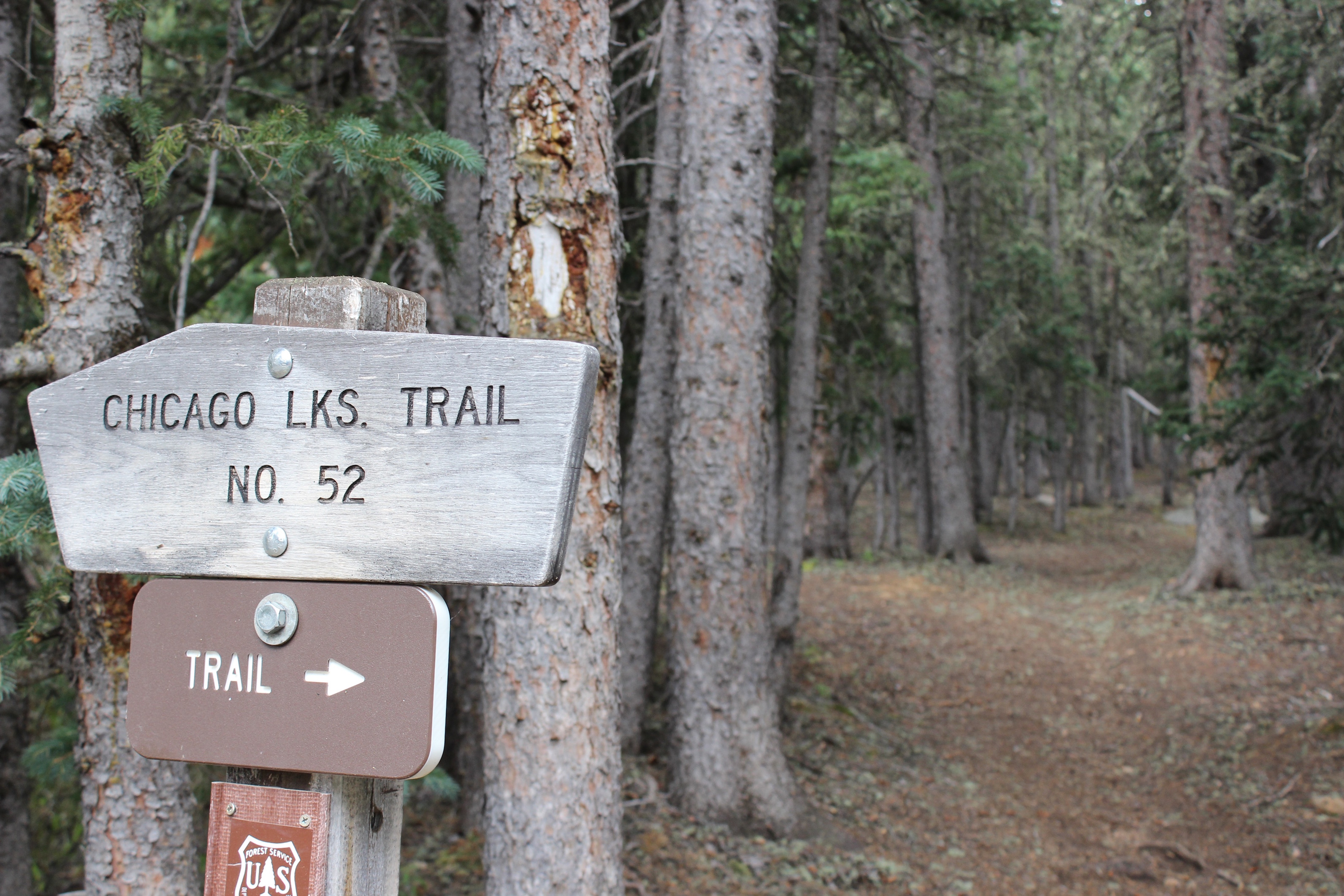Hiking is a beloved activity in many places around the world and can be enjoyed by all ages, given a certain level of fitness. The problem is that hiking trails these days are being inundated by assholes, which in this case is a designation made for the users of shared outdoor spaces who betray the unspoken contract between all users of the outdoors. Not only are these assholes unpleasant to other hikers, they put the sustainability of trails at risk in the future and can affect ecosystems and wildlife for generations to come.
Recently in Colorado, the Hanging Lake Trail has received an unusual amount of attention because of the amount of abuse it has taken from hikers disobeying signs and defacing natural rocks. These are asshole hikers. The infamous @trailtrashco, an instagram vigilante shaming hikers who abuse the outdoors (read the 303 Magazine article here) is purely dedicated to calling out assholes like those on the trails. The unspoken contract has always been fairly simple but since it seems to be necessary, it has been written out in many places. 303 decided to outline the contract in five short sections, explained below.
Stay Safe

Personal safety is an essential aspect of avoiding the “asshole hiker” designation. If each hiker takes on his or her own responsibility in preparing for a hike, the chances of endangering themselves or others is greatly reduced. This especially includes saving valuable time and resources from rescue crews who often volunteer for the positions and put their lives at risk to save people in the backcountry. Even if a situation does not warrant a rescue crew, someone who is unprepared may have to rely on other hikers, putting unnecessary and unexpected strain on their journey and supplies.
Staying safe is primarily about being prepared. Hiking is a fun activity, but it is also one to participate in with an understanding of the possible risks. Especially in Colorado, packing for various weather, conditions and situations should always be part of the adventure and adequate footwear is a must. An ideal daypack for a half or full day hike should consist of: a rain coat, hat, lighter or matches, compass (or fully charged phone with a compass app), plenty of water, tissues, a basic first aid kit with some kind of water filtration, snacks, sunscreen or sunglasses and a flashlight. These items might feel cumbersome — especially when a hike goes uneventfully — but in the event that something goes wrong, these items are usually the bottom line for survival.
Leave No Trace

Leave No Trace ideals are all about minimizing the impact a hiker has on the environment. @trailtrashco, the vigilante Instagrammer, consistently posts photos of assholes leaving trash on the trail — and it usually is in the form of dog poop in plastic bags. The main principles of Leave No Trace revolve around keeping the ecosystem healthy and in balance while maintaining the public space for the future. Part of the joy of hiking is escaping the impacts humans have on their surroundings, and that can only be enjoyed if humans are not negatively impacting the trails, open spaces and other wilderness areas. To ensure minimal impact, hikers need to always follow these guidelines:
- Leave what you find. Even though rocks, flowers, pinecones and other items on hikes might seem like perfect souvenirs, those items belong in their natural environments.
- Pack it in, pack it out. Anything that’s brought into wilderness areas needs to be taken back out. That especially means wrappers, water bottles, cigarette butts, beer cans and dog poop. Dog owners have extra responsibilities while hiking with their furry companions (see 303’s article about dog hiking etiquette here.)
- Know where to pee. Though we pee in clean water at home in our toilets, in the backcountry any water source should be avoided by 200 feet while urinating. Keep this in mind for any furry companions as well.
- Look but don’t touch. A common phrase in Leave No Trace literature is “take only pictures.” This encapsulates the idea that hikers do not need to make their own personal mark upon a place to prove they’ve been there. For instance, in many aspen tree groves in the mountains of Colorado, one can see the carved initials and markings of asshole hikers. Don’t be like those hikers.
Respect the Wildlife

Don’t feed the wildlife. Don’t touch the wildlife. Don’t aggravate the wildlife. Just don’t f*** with the wildlife. Hiking is not a trip to the zoo, and even then, animals deserve respect. Out on a hike in the wilderness, wildlife are more at home than a typical hiker, which also means that hikers are more often than not trespassing on wildlife territory. Some animals display warning signs — like rattlesnakes vibrating their tails before striking — while others may not display much aggression until the last minute — like moose who charge out of fear of sudden noise or movement.
The more popular trails are destined to have less animals, especially large animals, but lesser traveled trails should be used with more caution. In many places, hiking at dawn and dusk should be met with even more caution because that is often the time for predatory animals to be out and about. Know what kind of animals might be encountered on a hike and know what kind of tactics are best to avoid them and avoid confrontation.
Respecting wildlife is a double responsibility for dog owners, who must keep tabs on their dogs interactions with wildlife as well as their own. Keeping a dog on leash, even if it is a long leash, is better than letting it off leash. Not only does it keep the owner closer to protect the dog, it keeps the dog closer to warn the owner of any unusual activity.
Respect Other Hikers

Asshole hikers are notorious for disrespecting other trail users. In order to have the best time and help others have a good time, hikers are encouraged to conduct themselves in ways that will not take away from other people’s experience. There are some basic guidelines that apply to any public shared space — like trying to keep your voice down when sharing the trail, not playing loud music and keeping it PG rated.
Some of the other etiquette tips are more particular. When hiking inclines, the person hiking downhill should yield to anyone coming uphill, unless the people coming uphill are wanting a break. When taking a break, move your belongings and yourself off the trail without putting yourself in danger — i.e. not stepping down a steep hill side. If someone is hiking faster than you from behind, stop and let them pass. If you are hiking faster than another person, do not try to take shortcuts or maneuver ahead of them without asking. This kind of behavior can have unintended consequences — like dislodging rocks or debris that can hit other people on the trail or abusing the structure of the trail itself.
Know the Trail

Before setting out on any hike, do some simple Google searching about the trail and the area around it. These kinds of searches can bring up information regarding wildlife danger, weather patterns, possible closures and other important tidbits regarding the hike. These are invaluable when looking to hike less-traveled routes, as they will usually explain areas where trail markers are sparse or a detour has been made that may go unnoticed otherwise. There are numerous sites and forums for hikers, like AllTrails and ProTrails, which have all the information about a given trail, as well as user reviews, photos and suggestions.
Knowing a trail before hiking it will prevent many hikers from being surprised about terrain or getting lost. In this day and age, not many hikers seem to be carrying around topographical maps, so at the very least looking before going will help with orientation. During the hike, know the trail refers, pay attention to all posted signs, follow the trail markers and have awareness to natural landmarks along the way.
Even though hiking can often feel like an activity that is separate from other people, the actions of every hiker affect the environment, wildlife and other hikers tremendously. Enjoying the activity comes hand-in-hand with understanding the possible risks and the recommended etiquette to participate.
Think you have what it takes to not be an asshole while hiking? Check out our list of 101 Of the Most Beautiful Hikes in Colorado.







You should add “don’t cut trails” to the list somewhere — as in, stay on the trail and follow the switchbacks, even if you’re impatient. Cutting trail can break down a trail crew’s hard work, cause erosion, and create confusion over where the actual trail goes.
If you want people to be more respectful of one another on the trail it might be a little counter productive to start off by calling them an asshole.
Agreed
Great way to get people’s attention to read the article though!
Yes, an attention grabber that works! Too many trails disrupted for cute phrases…
If you want PC, go to your mama. Too many cry babies in the world… oh you hurt my feelings, well then don’t be an asshole.
thank you.
How about leash your dog so it does run ahead jumping on people.
Dogs off leash are over running some of the popular trails in the national forest. I am afraid to take small Children hiking since one lunged at him when he went to pet it. Owner was 50 feet back. I wish there was a test on a Colorado
Drivers license application with these rules on how to be a steward of our state
there should be some sort of dog obedience testing. I agree that disobedient dogs or more so bad owners can definitely ruin an experience.
My wife and I personally invest a lot of time walking and training obedience into our dog and have great control of him. it’s hard to paint all dog owners with the same brush…. we of course pick up his waste, having him on leash is a pain in the but for long hikes and scrambles
How about also adding, “no one wants to hear your music, so use headphones instead of your blaring, attachable speaker.”
AMEN!
I don’t like using headphones because I can’t hear what’s going on around me. I use a small Bluetooth speaker that I keep at such a low volume that it can’t be heard at all from 15′ away. And I will turn it down even further whenever someone is within sight. And I don’t even listen to anything close to obnoxious music when I’m hiking…I listen to mostly down tempo piano and violin compositions
Why not turn the darn thing off completely and REALLY hear what’s going on around you. Leave the listening to music to in your car or when you’re at home NOT when your hiking in some of the most BEAUTIFUL country GOD has created!!!!!
why are they even carrying the weight of a radio?
How about “leave it cleaner than you found it”. There’s always something you can pick up and put in the trash can.
the problem is self esteem, self worth and self respect… with the asshole hikers, they have none of these… they have nothing going for them in life and have nothing of their own to have any pride in… as a result they have no regard for anything else in life… they treat others as they treat themselves… it’s a mirror… the Universal Rule on this is… We can’t give what we don’t have…
And pkease stop stacking rocks! Thats graffitti!!
And stop stacking rocks! Thats graffitti!
Peggy… those stacked rocks are called cairns. They are intended to mark the trail for others when it is faint, or to help find your way back to a campsite… they are not “graffiti”.
Building a cairn can be an indicator , but to build a sea of cairns or rock art can be better left in Asia where it has cultural and spiritual value..
“An ideal daypack for a half or full day hike should consist of: a rain coat, hat, lighter or matches, compass (or fully charged phone with a compass app) …”
Sorry, but an app is no substitute for a compass and map.
And it should go without saying… no smoking!
I agree with almost everything you have said, except for your list of essentials. I am a retired law enforcement officer who spent a lot of years in Search and Rescue. Day, or 1/2 day hikes, solo, seem to be where most of the problems occur, for whatever reason. It is always beneficial to have some type of shelter and cordage. You may never need it, but a tube tent or survival blanket is light and can make a night out a lot more tolerable. A whistle is very light and can carry a lot farther then a shout. Also, especially for solo hikers, but applies to all, leave a trip plan on the dash of your vehicle at a trailhead. This should include date and time in, route, destination, duration of stay, and route out. You could also leave a phone number and specify when you will monitor this each day, ie: 3-4 pm daily. If someone dropped you off, they should have all of this and know when you will/can contact them. If you don’t they should contact Search and Rescue which is usually done by the County Sheriff having jurisdiction. On Federal property it will be the agency having jurisdiction; USFS, NPS, BLM, etc. You should know ahead of time who this is as should anyone waiting for you. If things begin to look wrong to you (as in where am I, really) don’t continue to wander. Stop, consult your map or device and try to figure it out. If it becomes dark, or you cannot reorient yourself, stay where you are, make a camp, build a fire, and stay the night. Try to orient yourself the next day. If you cannot, locate a water source close by, improve your camp, get wood, and wait. If you have done the previous things they will locate you.
Thank you, Bob! This is all very useful information that anyone should know before spending time outdoors and your suggestions are appreciated.
303 Magazine’s passive aggressive and holier-than-thou attitude is always pretty funny. Ironically, it serves as a reminder of how to not be an asshole by not acting like their staff of writers. I also like to come here to see what kind of superiority complex they’re trying to flex over tourists and non-native citizens, as it’s usually pretty unwarranted.
This article easily could have been written in a non-negative and condescending tone. Just another reason why I feel that Colorado has a false reputation of being the nicest state in the country.
Excellent article!
Great article, sad that this is not intuitive to anyone partaking in a hiking adventure.
No need to carry on the negativity regarding reader comments, they speak for themselves. Stay safe, and enjoy the experience its a gift to be treasured.
Peeing near water sources is not the issue. Poop is the issue. On river trips in the desert the ‘best practice’ is generally to pee in the river, rather than in the desert soil where it will linger until the next (potentially quite far-off) rain. Human feces on the other hand are gross, and are the main vector for spores of the giardia bacterium–ingestion of which results in a very unpleasant, though easily treatable, intestinal illness. I am a full-time professional climbing and wilderness guide, and the main ‘asshole’ move I see people making out there is failing to pack out their dirty toilet paper. Odd that this isn’t given a few lines in the article. Carry a zip-lock bag, folks! Pack out your TP, it doesn’t bio-degrade all that fast and no-one likes to see it lying around after curious critters or frost turn up the soil and expose it!
Yes! TP must be packed after being used & disposed of properly – have seen it many many times on hikes.
This is a good article on LNT. But it does not mention one of the most important and damaging issues! Many people are driving 4×4’s, Jeeps, SUV’s, other gas guzzlers and think nothing of driving 3 to 6 hours often to get to the hiking trails! What about the BIGGER picture about how your getting to your hikes? If your really worried about nature, what about the pollution of your vehicles and what it’s doing to the environment? The LNT rules should also mention car sharing plus other ways to cut down on the amount of pollution and the tons of CO2 a year each vehicle is dumping into our environment.
Good article. One omission of which everyone should be aware…if you are hiking with companions, PLEASE keep your conversation at a low volume. There have been numerous times my hike has degenerated into trying to get away from people talking loudly. Often the purpose of hiking is to basically be one with nature, to create a zen state, to get away from people & conversation, to immerse oneself in nature. I welcome sharing the trail with you, but please please respect the need for quiet out there. If you want conversation, save it for the after-hike cafe visit. I have no problem at all with the term “asshole” – I have a couple times accidentally left a dog poo bag on the trail with the intent of picking it up on the way back to the car, and, much to my dismay realized it later. To offset that karma, I usually pack a few larger bags with me and pick up other dog poo bags that I see.